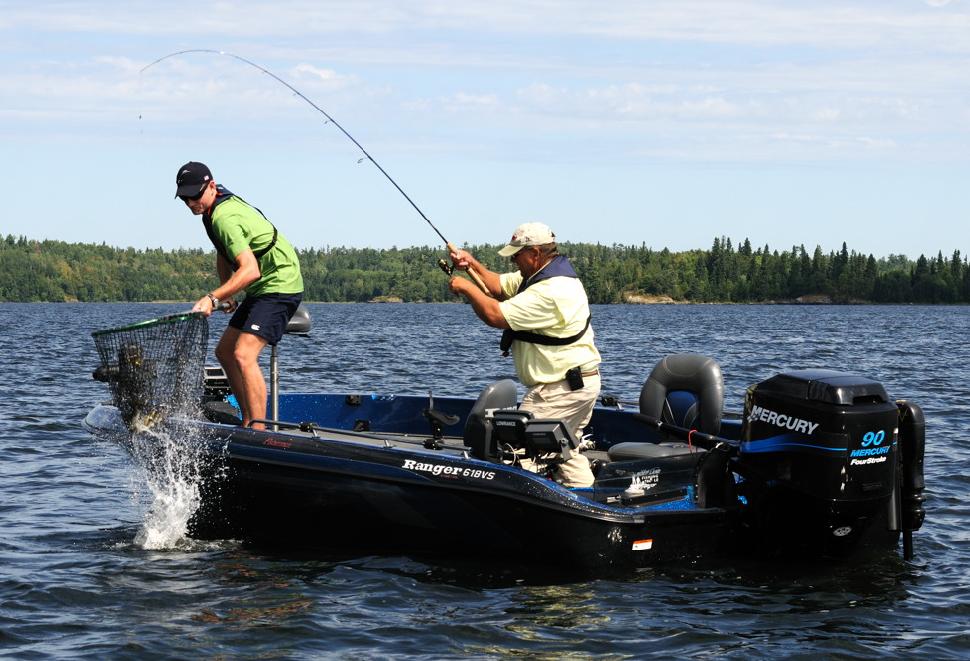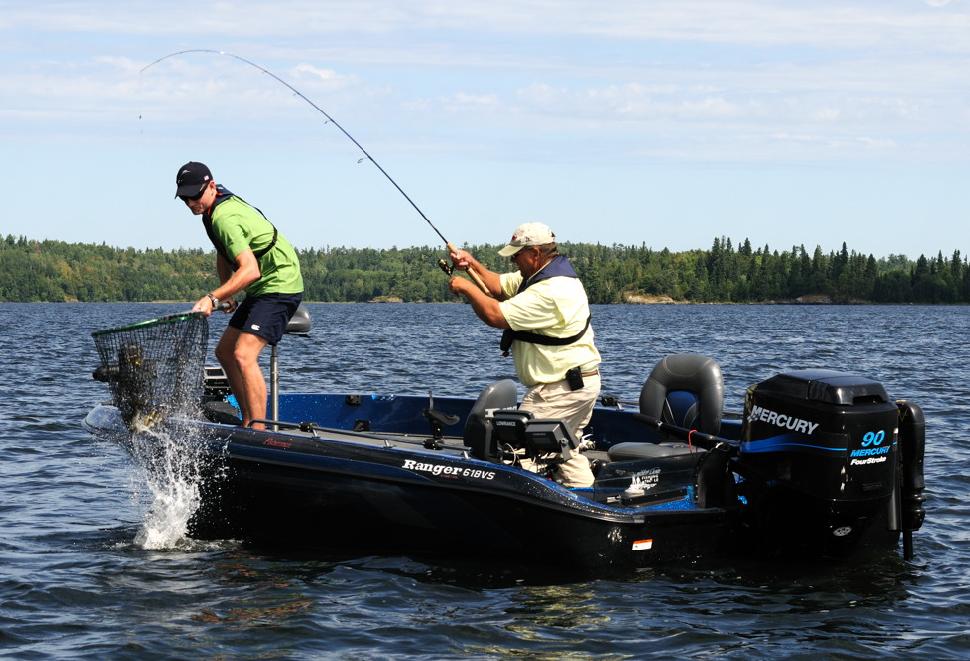Advertisement
One of the fun things I enjoy doing every week is a live 15-minute segment each Saturday morning called, “Fish Talk With The Doc”, on the Outdoor Journal Radio Show.
The Outdoor Journal is a two hour live radio show hosted by Fish ‘n Canada’s Angelo Viola. It airs at 8:05 EST and I normally come on for the final 15 minutes of the show. By the way, you can listen to it on Sportsnet 590, The FAN AM, Bell ExpressVue or online at www.fan590.com Here is a link to the show and all the details: http://www.fishncanada.com/content/view/135/54/
Advertisement
Anyway, two weeks ago, Angelo and I were talking about the walleye seasons that are opening pretty much across all of Canada right now, and I related a question I’d received from some faithful Outdoor Canada readers. They wanted to know if I thought they should troll or cast for walleyes on opening day. As I told Ang, my answer was a resounding, “yes”.
Ang laughed because he knew exactly what I meant.
Anytime you’re unsure of where the walleye are located, or their activity level, it is wise to keep moving, trying different depths of water, different structure and cover and different speeds until you can find a concentration of fish. The best way to do all of that, and keep a lure in the water, is by trolling.
Advertisement
Simply start at a community fishing hole or a spot you’ve done well in the past and troll a spinner rig behind a bottom bouncer. By the way, a one-hook spinner rig tipped with a minnow is usually the best option in the spring. When the water warms up a little more, tip the same one-hook spinner rig with a leech. When it warms up even further, in the summer months, a two or three hook harness baited with a night crawler usually comes into its own for walleyes.
Or, you can do what I normally do and that is carry all three baits with you in the boat and let the walleyes decide which one they prefer on any given day.
Advertisement
As we were talking on air about this approach, however, Ang related a funny story from a few years back where he was walleye fishing off a point, casting, and catching the dickens out of the fish. That is when he spotted another boat, trolling down the shoreline, coming toward him.
As luck would have it, when the anglers approached the spot where Ang was fishing, they caught a nice walleye. “But guess what they did next?” he laughed. “They kept trolling down the shoreline away from the fish.”
I’ve seen the same thing so many times that I have to admit, it is comical. One time, in fact, I was filming a television show and my guide was trolling us along a distinct breakline. I nailed a gorgeous 10-pound trophy walleye, unhooked and released it and then couldn’t believe what he did next. He started up the kicker motor and started trolling us away from the spot where we’d just caught the fish.
I didn’t say anything at the time—heck, he was the hotshot local guide—but when we eventually turned around, retraced our steps and I landed a magnificent 12-pound walleye on almost the exact same spot, I couldn’t help myself. I pleaded with the guide to drop a waypoint on the spot, throw out a marker buoy, turn off the motor, lower the bow mounted electric and let me cast around the point.
It is often the whole reason you’re trolling in the first place—to find an active school of fish. But, once you’ve located them, it often makes more sense to change to a casting presentation —jigs, slip bobbers or crankbaits. When you do, you often clean house.
Which brings us to this past weekend’s show.
I was relating to Angelo how the trolling approach we’d talked about the week before had worked so well for me, fishing for smallmouth bass, last Friday afternoon. We enjoy a special catch-and-release bass season until July 1st up here in Northwestern Ontario, and I located three wonderful schools of fish at three different locations.
It is typical of the spring when the bass leave their deep water winter haunts and head toward the shallows. They move en masse and stick together, often for several days, before the schools eventually break up and scatter.
Anyway, to make a long story short, I found three of those concentrations on Friday and I’d hate to guess how many fish there were in each school. I never did keep track of the number I caught but I’d guess it was easily 50 bass and maybe closer to 75 or 80. A fun day to be sure.
But here is the thing: You had to work hard to get the first couple of fish to bite. As a matter of fact, I thought a couple of times, there must only be one or two fish present and that I should leave.
But, I stuck with it, and the more fish I caught, the faster the feeding frenzy became. It is something that can occur any time of the year, but I find it most common in the spring. It is as though the school of fish lazily watch one or two of their buddies bite the bait and run off with it, but then when the lure re-appears, they start rushing over to see who can bite it next.
I am honestly not sure what is going through the fishes’ heads, but whatever it is, after you catch five or six or seven of them, you just know the action is going to heat up even more. The competitive schooling instinct kicks in and the action heats up immeasurably.
So, if you’re fishing for walleyes—or any other species—and you’re not entirely certain where the fish are located or their activity level, start with a trolling presentation. Then, when you catch a fish, carefully mark the spot and try picking it apart with a more precise casting approach.
Finally, when you catch a fish or two, don’t think that is all that is there. Keep working on the school and see if you can’t start a feeding frenzy. Because if you can, you’ll have to pinch yourself to make sure you’re not dreaming.


